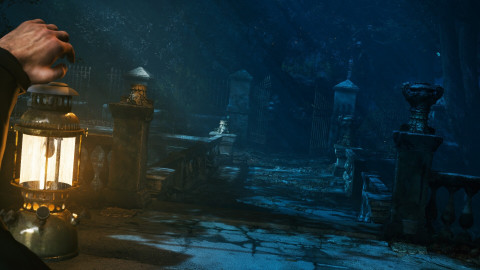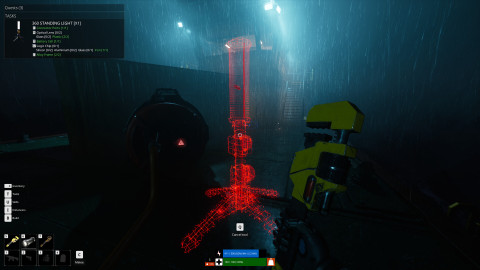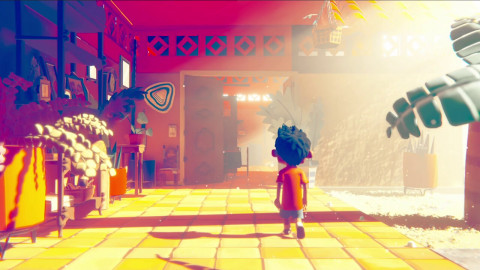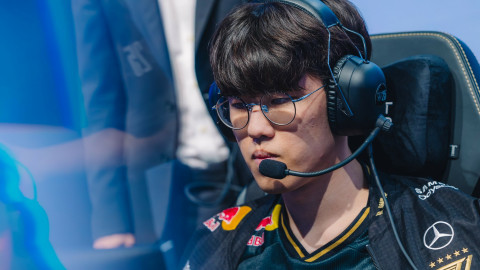
The market for team-based PC MoBAs is oversaturated. Between League of Legends, Dota 2, Heroes of the Storm, Smite, Battleborn, Paragon, Strife and Gigantic, Battlerite, and just recently, Master X Master, it seems that any video game attempting to capture the devotion of the MoBA player base is biting off more than it can chew.
And yet, Breakaway exists and it has a clear goal: to become a major esport. Many new games are taking this approach, but Breakaway is uniquely prepared. Developed by Amazon Game Studios, Breakaway has the financial backing you’d expect from an e-commerce giant as well as natural Twitch integration thanks to Amazon purchasing Twitch back in 2014.
These inherent Twitch synergies include the ability for streamers to broadcast any of their friends games, showcase in-game stat overlays (pulled directly from the match), and even place bets that their Twitch audience can participate in using in-game currency. Breakaway will come complete with spectator and broadcast modes, in fact, you can see them in action during one of the many office league tournament streams the game studio personally produces.
The Gameplay
When I first encountered Breakaway I didn’t quite know what to expect. I had heard of the game in passing, but balked at the primary concept.
“Team Battle Sport? Isn’t that just a fancy way of saying MoBA?”
I wouldn’t blame anyone who uses the term MoBA to try and describe Breakaway, as the designers have confidently borrowed several of the most fun and engaging elements of the massively popular genre. Breakaway has an in-game currency you collect to purchase items, multiple heroes types, QWER abilities, team wide buffs and objectives, and even the ability to carry a game if your hero becomes fed enough.
“The ball is the focal point of the game— it will almost always be the most important thing to keep track of.”
And yet, the primary obstacle of Breakaway involves running a ball from point A to point B in order to score a point. Only the ball is called a Relic and the field is a series of maps each with their own fantasy setting. These battlegrounds are fraught with player created (and map specific) obstacles that must be navigated in order to successfully drive the ball towards the opponent's side of the map.
Each hero has a set of buildable traps that persist on the battleground until destroyed, adding a unique layer of strategy. Despite player positions resetting every time a point is scored, the traps remain where they are. An organized team can create a fortress of traps and obstacles in an attempt to foil the opposing team's offensive scoring capability, mirroring the importance traditional sports places defensive plays as well as offensive plays.

To make all of these potential obstacles approachable, Breakaway offers unprecedented movement options, including the ability to jump, dash, and sometimes leap across large portions of the map all at once. In a videogame climate that has developers often looking for ways to make their game accessible to all players equally, Breakaway has a clear bias towards the competitive gamer. This is, after all, a videogame trying its best to feel and play like a sport.
Like most complex things, it’s sometimes easier to show then tell. Check out the following clip from a recent Breakaway tournament.
There is something immediately engaging and visceral about watching a competitive Breakaway game. I had the opportunity to play Breakaway on an esports stage once, complete with commentators, coaches, and a sizable crowd watching. It was an incredibly fun experience and, even though it was my first time playing, there was something inherently thrilling about the match.
Understanding Breakaway's appeal
look at the success of Rocket League and the momentum it has gained by embracing the “sports” side of esports and competitive gaming. Rocket League is easy to learn but incredibly difficult to master, while simultaneously being the easiest esport to explain and watch. Anyone who has ever enjoyed watching a traditional sport can relate with Rocket League’s primary objective: score a goal on the opponent with the ball.
“The usual confusion and disorganized chaos that can make team games feel so irritating just goes away when there is a central coach whose entire role is calling the shots.”
Breakaway has successfully captured this immediate appeal without losing any of the complexity and strategy of a MoBA. The viewing experience, something that many aspiring esports struggle with, is one of Breakaway’s biggest strengths. There is no room for confusion as the spectator camera follows the ball exclusively. This works because the ball is the focal point of the game— it will almost always be the most important thing to keep track of.
Take a look at this fumble situation that results in a goal:
It doesn’t take an esports junkie or a video game expert to understand the stakes at play. As the game becomes more polished and its playbase larger, this type of traditional sports appeal might be its biggest selling point.
The active coach
One of the most interesting parts of Breakaway esports is the use of the active coach. While teams of four are pitted against each other, each team has a coach that watches the game from a big-picture perspective, free to communicate and lead his team. The coach has no in-game controls and is merely a spectator, but the inclusion of such a role just works. It begs the question as to why an active coach isn’t allowed or promoted in other team esports.
When I was playing, our coach devised an overall strategy. He helped us stay on that strategy and would call out plays as he saw them. He would warn us about over extending and strategically tell us what we needed to do.
“Get back, it’s 2 vs. 4!”
“Try to stall this as long as possible”
“Attack now, we have the advantage!”
These call-outs really allowed me to focus on individually outplaying my opponents and, even when the play didn’t work or we wiped, I never felt frustration or anger. The usual confusion and disorganized chaos that can make team games feel so irritating just goes away when there is a central coach whose entire role is calling the shots.

Our coach made a group of four strangers feel like a real team and that is really all an emerging esports title ever wants.
The Characters

Mark Rosewater, head designer for Magic: The Gathering, once explained how important the use of piggybacking (Lesson #4) is when designing mechanics and characters in a game. From his Twenty Years, Twenty Lessons lecture he explains why matching player expectation is so useful:
“Piggybacking is the use of pre-existing knowledge to front-load game information in order make learning easier. In Magic, we have a mechanic called flying. It is the easiest mechanic to teach because all I have to say is, you know, it flies! … It so matches expectations of what people already know, so it becomes easy to learn.”
When I played Breakaway for the very first time, even though I had no idea of it’s characters or what any of them were good at, I still felt like I had a general idea of how they worked. For example, there is a character named Spartacus that I knew was a fast, melee damage character because of his two swords and light armor. It also helps that he is named after Spartacus, the famous gladiator.
Another character, named Rawlins, looks like he came straight out of a western action movie, complete with sheriff's badge and a gleaming revolver. Sure enough, Rawlins excels at 1v1 duels and shoots a gun very fast.

My favorite character to play was simply named Black Knight. He is massive, heavily armored, and naturally one of the tankiest characters in the game. All things I knew immediately by just looking at the character.
This “what-you-see-is-what-you-get” style of character design helps Breakaway’s accessibility and even enhances the viewing experience. It’s easy to understand what role each hero has and what they are good at, something that in other MoBA style games can be hard to pinpoint, especially for a casual observer.
See for yourself
Breakaway does a lot of things right, but is it too late to make a dent in the competitive MoBA landscape? Normally, I’d err on the side of caution and wait until the game's release to get excited, but the value of Amazon and Twitch working side-by-side to produce a whole new esport can’t be understated. This isn’t a small indie company relying on word of mouth; it’s Amazon.
Some call it a Team Battle Sport, others call it a Mythological Sports Brawler, but what we call the game isn’t very important. What matters is whether or not gamers will embrace the gameplay and invest in this emerging esport.
Check out the following 10-minute gameplay video and tell us what you think in the comment section. Could this game become the next big thing?
-

Warcraft 3 is my one true love and I will challenge anyone to a game of Super Smash Brothers Melee.
Sort by:
Comments :0





